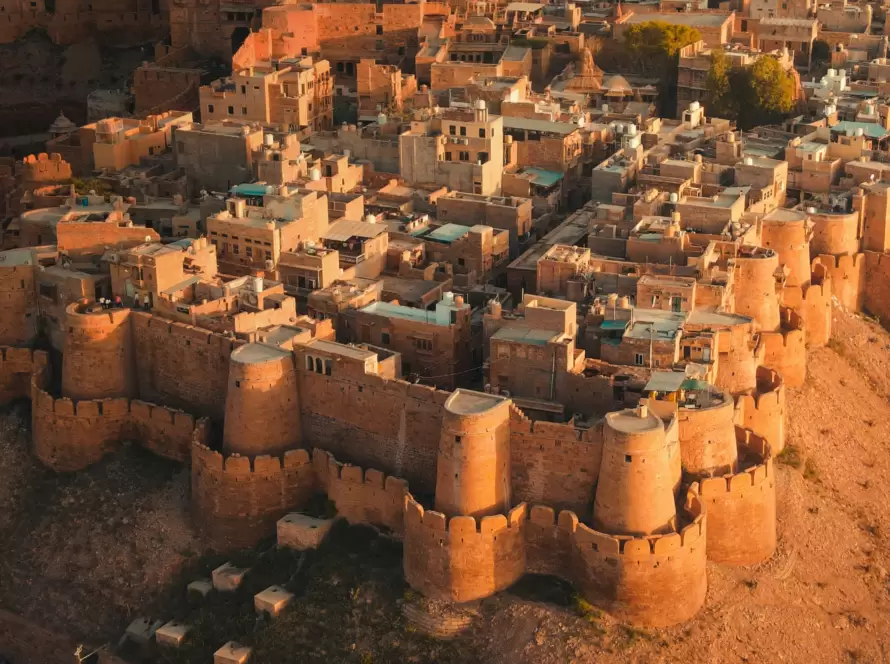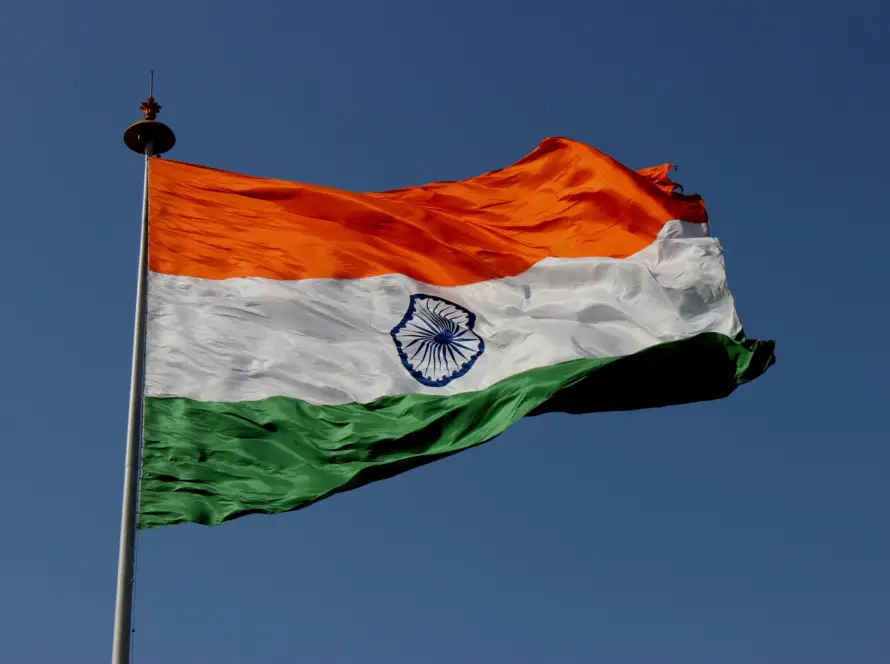Generated by Contentify AI

Key Takeaways
- Taj Mahal is one of the most famous Indian monuments
- Qutub Minar is the tallest brick minaret in the world
- India Gate is a war memorial located in New Delhi
Introduction
India, a land steeped in history and culture, boasts an array of architectural marvels that draw visitors from across the globe. The country’s landscape is dotted with ancient forts, grand palaces, and magnificent temples, each telling a story of their own. Among these, certain famous Indian monuments stand out, not just for their architectural grandeur but also for their historical significance. These landmarks have withstood the test of time and continue to be a testament to India’s rich heritage. Exploring these monuments is like walking through the pages of history, offering a glimpse into the country’s past, its art, and the diverse cultures that have flourished on this vibrant land. Whether you’re a history buff, an architecture enthusiast, or simply in love with exploring new places, these iconic sites are a must-visit.
The Taj Mahal
The Taj Mahal, standing majestically on the banks of the Yamuna River in Agra, is not just one of the most famous Indian monuments you need to see but also a symbol of love recognized around the globe. Built by Mughal Emperor Shah Jahan in memory of his wife Mumtaz Mahal, this ivory-white marble mausoleum combines elements from Islamic, Persian, Ottoman Turkish, and Indian architectural styles, showcasing the richness of Mughal architecture. The complex includes a main gateway, garden, mosque, and several other mausoleums, encompassing more than just the main structure itself. Its intricate carvings, calligraphy, and the symmetry of its design are breathtaking, drawing millions of visitors each year. The Taj Mahal is not only a UNESCO World Heritage Site but also considered one of the New Seven Wonders of the World. Visiting this iconic monument offers a unique glimpse into the artistic and cultural heritage of India, making it a must-visit for anyone exploring the country’s historical landmarks. The beauty of the Taj Mahal is unparalleled, changing hues from dawn to dusk, and it represents a timeless testament to the power of love and the splendor of ancient India.
Domain, Web Hosting, and SEO Services
At Shakti Web Solutions, we offer world-class domain registration services at cost-effective prices. Register your domain for business identity and get fully hosted professional email solutions.
The Red Fort
Nestled in the heart of India’s bustling capital, Delhi, stands the Red Fort, a historic fortification that serves as a potent symbol of the country’s rich past. This magnificent structure, also known as Lal Qila, was built by the fifth Mughal Emperor, Shah Jahan, in 1638, to serve as the new capital of his empire. Crafted from red sandstone, which gives the fort its name, it encapsulates the zenith of Mughal creativity under Shah Jahan’s reign.
The fort’s massive walls, which stretch for more than 2 kilometers, were designed to protect its inhabitants from invaders. Today, they stand as a protective shell around a complex that’s rich with palatial buildings, including the Diwan-i-Aam (the Hall of Public Audiences), Diwan-i-Khas (the Hall of Private Audiences), the Pearl Mosque, and the Royal Baths. Each of these structures showcases the elaborate artistry and craftsmanship of the Mughal era, making the Red Fort a crucial chapter in the narrative of famous Indian monuments you need to see.
Beyond its architectural splendor, the Red Fort holds a pivotal place in India’s contemporary history. It is here that the Prime Minister of India hoists the national flag and delivers a speech every Independence Day, a tradition that underscores the fort’s status as a symbol of India’s struggle for freedom.
Declared a UNESCO World Heritage Site in 2007, the Red Fort attracts visitors not only for its historical significance but also for its aesthetic appeal. Walking through its vast premises, one can’t help but be in awe of the intricate carvings, the expansive gardens, and the sheer magnificence of an era that shaped the destiny of the Indian subcontinent. Visiting the Red Fort is more than just a tour of a grand monument; it’s an immersive experience into the heart of India’s storied past, making it an indispensable stop for anyone drawn to exploring the famous Indian monuments you need to see.
Related articles
Qutub Minar
Qutub Minar, a soaring tower of victory that pierces the skyline of Delhi, stands as a quintessential emblem of Indo-Islamic architectural brilliance and a pivotal piece among the famous Indian monuments you need to see. Erected in 1193 by Qutb-ud-din Aibak, the founder of the Delhi Sultanate, this monument was built to celebrate the defeat of Delhi’s last Hindu kingdom. The minaret, which is the tallest brick minaret in the world, measures an impressive 73 meters in height and is composed of red sandstone and marble, showcasing intricate carvings and verses from the Quran.
The complex surrounding Qutub Minar is a treasure trove of historically significant ruins, including various mosques and graves, each narrating tales of Delhi’s rich and tumultuous past. Of particular note within the complex is the Iron Pillar, which dates back to the 4th century and stands testament to the advanced metallurgical skills of ancient India, as it has remained uncorroded through the centuries.
Declared a UNESCO World Heritage Site, the minaret and its surrounding architectural wonders offer a window into the art and culture of medieval India. Visitors are often captivated by the striking blend of architectural styles and the stories of power, conquest, and religion that have shaped the monument’s history. The Qutub Minar not only serves as a symbol of Islamic rule in India but also as a site of immense historical and architectural importance, making it a must-visit for anyone looking to immerse themselves in the narrative of famous Indian monuments you need to see.
Gateway of India
Standing as a majestic gateway to the Indian subcontinent, the Gateway of India in Mumbai is an iconic symbol not just of the city, but of the nation itself. Constructed in 1924, this colossal archway was built to commemorate the visit of King George V and Queen Mary to India in 1911. Designed by the architect George Wittet, it combines elements of Hindu and Muslim architectural styles, symbolizing the unity of the diverse cultures that make up the country’s fabric. The basalt structure, adorned with intricate latticework and elaborate designs, overlooks the Arabian Sea, offering a breathtaking view that has captivated visitors for nearly a century.
The Gateway of India isn’t just a testament to the architectural prowess of its era but also holds a significant place in the country’s history. It served as a symbolic ceremonial entrance to India for the viceroys and governors of the British Raj, and later, it was through this gateway that the last British troops left India in 1948, marking the end of British rule. Today, it stands as a proud reminder of India’s struggle for independence and its subsequent triumph.
The area surrounding the monument is always bustling with activity, with vendors, photographers, and street food stalls adding to the lively atmosphere. Tourists and locals alike flock to the site, not only to admire its grandeur but also to enjoy boat rides from its wharf to nearby attractions such as the Elephanta Caves. This makes the Gateway of India not just a monument to visit but an experience to be savored, embodying the vibrant spirit of Mumbai and the rich heritage of India.
As one explores the famous Indian monuments you need to see, the Gateway of India stands out for its historical significance and architectural beauty. It acts as a tangible link to the past, while continuing to be a part of the living, breathing present of India’s largest city. For anyone looking to delve into India’s colonial history, architectural diversity, or simply to experience the dynamic culture of Mumbai, a visit to the Gateway of India is an absolute must.
Conclusion
Exploring the famous Indian monuments you need to see is akin to embarking on a journey through the annals of time, where every stone tells a story of love, valor, and the rich tapestry of Indian culture. From the ethereal beauty of the Taj Mahal to the imposing grandeur of the Red Fort, the intricate carvings of Qutub Minar, and the welcoming arch of the Gateway of India, each monument offers a unique glimpse into the past that shaped the present of this vibrant country. These landmarks are not just tourist destinations; they are the soul of India, encapsulating the essence of its diverse heritage, architectural innovation, and the historical events that have left an indelible mark on the nation’s collective consciousness. Visiting these monuments provides an opportunity to marvel at the artistic and engineering feats of ancient India, while also reflecting on the historical intricacies that have contributed to the country’s cultural fabric. For anyone looking to immerse themselves in India’s historical and architectural wealth, these monuments stand as beacons of the nation’s glorious past and vibrant present, making them an essential part of the itinerary for history aficionados, culture enthusiasts, and travelers seeking to experience the true essence of India.






